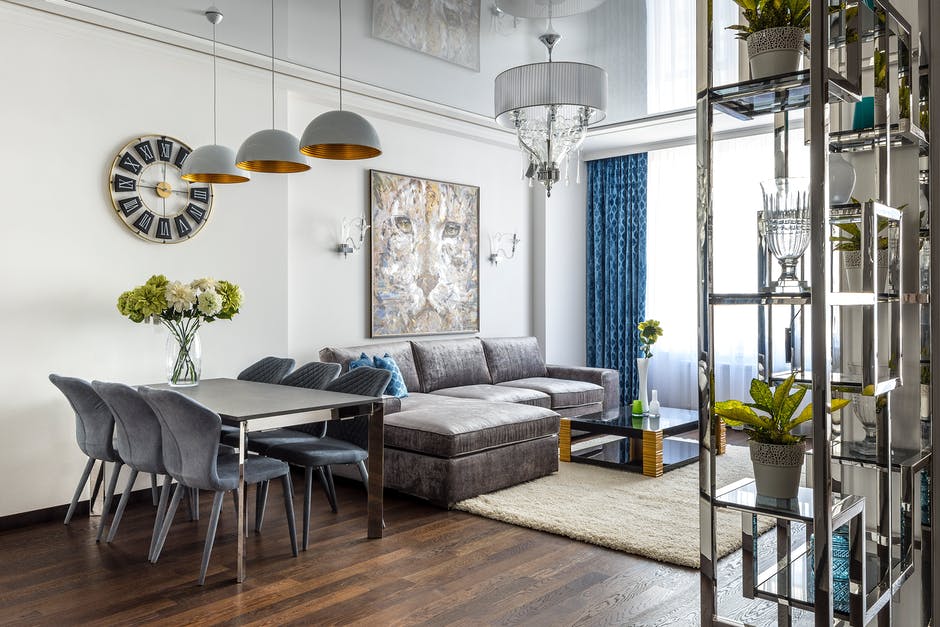Globally, the vinyl flooring market’s growing at a rate of 5% per year, with over 9.8 million square feet already installed worldwide.
Laminate flooring even more popular, worth over 713 million USD. It’s hard to believe that there’s something even better than these popular alternatives to conventional wood and tile flooring.
Hybrid flooring combines all the best benefits of laminate and vinyl without the drawbacks to create a complete, aesthetic flooring solution for your home.
Find out more about hybrid flooring and why it’s a good choice for you.
What Is Hybrid Flooring?
A hybrid floor is a type of composite floor made from polyvinyl chloride (PVC) combined with various compounds to improve its suitability for flooring. This top layer’s made even more efficient by combining it with fiberboard material and melamine resin.
Manufacturers press these layers together to form a hardwearing floor that’s both durable and attractive.
Composition of Hybrid Flooring
The secret to these positive aspects of hybrid flooring lies in its construction. Hybrid flooring comprises four layers of materials. These are:
A Commercial Grade Wear Layer
The top layer of hybrid flooring has an aluminum oxide finish similar to laminate flooring. It offers supreme resistance to everyday wear. You can get hybrid flooring in a variety of Abrasion Criteria (AC) ratings.
The higher this rating, the better. A floor with an AC rating of 1 suits residential applications, while an AC rating of 5 works in heavy commercial settings, like department stores.
An Attractive Design Layer
This printed layer’s also like the one used in laminate flooring.
It offers supreme versatility when it comes to aesthetic designs. You can get hybrid flooring that looks like slate, or with the look of hand-scraped wood.
Likewise, this layer’s available in a huge range of colors. Some manufacturers can offer their exclusive Ultra Plank vinyl flooring range in up to 12 different colors.
A Waterproof Core
The next from last layer adds stability and dimension to hybrid flooring. There are two main types of core material used in hybrid flooring.
These are:
- SPC – a stone plastic composite made from PVC and limestone
- WPC – a wood plastic composite comprising PVC and recycled wood
SPC’s the slightly more durable option, while WPC offers greater comfort underfoot.
A Cork Backing
Not all hybrid floors come with the backing already attached. When they do, this layer adds cushioning and sound absorption to the floor.
It’s best to choose hybrid flooring with an attached cork backing if you want to reap the full benefits of hybrid flooring.
The Pros and Cons of Hybrid Flooring
Have the above pointers sparked an interest in this innovative flooring option? Now, let’s get into the nitty-gritty of why hybrid flooring’s all set to become the new favorite for residential flooring across the world.
Water-Resistance
Hybrid flooring’s completely waterproof thanks to its hard PVC topcoat and PVC core. That means you can mop your hybrid floor and never need to worry about spills.
Thanks to this you can also install hybrid flooring in any room.
Easy to Install and Maintain
Hybrid flooring’s a floating floor that snaps together with a click-lock system. Anyone with reasonable handyman skills can install this type of floor themselves.
DIY installation saves you a ton of money on hiring someone to upgrade your floors. You can also install it on any level floor, so if you’re renting a house, they’re ideal as a temporary measure.
In the unlikely event that one of the planks breaks, you can easily replace it with a new one.
Durability
The tough top layer of hybrid flooring’s impervious to dents, scratches, and scuffs. It’s unaffected by UV light, so it won’t fade and the PCV and limestone cores don’t expand and contract much.
That means your floors won’t warp due to temperature changes. You’ll enjoy your hybrid floors for decades after you’ve installed them.
Stain-Resistance
The top layer also adds stability to the hybrid floor, making them less prone to scratches, dents and stains.
You can clean hybrid floors easily using a soap solution and mop, a vacuum, or a broom. They’ll look as good as new throughout their long lifespan.
Versatility
You can pick and choose from different colors, AC ratings, and designs when you opt for hybrid floors. They come in smooth, or embossed finishes that suit any room in your home.
It’s also comfortable underfoot, warm, quiet, and good-looking enough for any application, both residential and commercial.
Eco-Friendliness
Hybrid flooring saves our forests from exploitation thanks to its recycled wood or bamboo components. You can also buy VOC-free versions of hybrid flooring if you want to.
Although PVC isn’t always considered an eco-friendly material, it has a low-carbon footprint throughout its lifecycle.
Cons of Hybrid Flooring
Although manufacturers are constantly refining their products, there are still a few drawbacks associated with hybrid flooring. These are:
Expense
At the outset, hybrid flooring costs more than laminate flooring. However, it does last longer, and you can save on installation costs.
It’s much cheaper than solid hardwood flooring.
You Can’t Refurbish Hybrid Floors
You can’t recoat or sand hybrid floors but there’s rarely any reason to. Their durability means they’re rarely damaged except in extreme circumstances.
You can also replace any damaged planks easily and affordably, especially when you buy them online.
Authenticity Issues
Purists might complain that hybrid floors feel less authentic than real wood floors. Some people say they feel less solid too.
However, most people find it difficult to tell the difference in appearance between hybrid flooring and wood floors at first glance.
Make sure you choose a high-quality floor for the best aesthetics. The cheaper brands might have unrealistic print patterns and unnatural repetitions.
You Need a Flat Sub-Floor
Before you install hybrid flooring, you must ensure your floors completely level. There shouldn’t be more than a 3 mm deviation over two meters.
The snap-lock system won’t seal properly if your floor’s uneven, causing potential issues with water seepage. To be fair, you need a level subfloor for most types of flooring except carpet and vinyl sheet flooring.
When installing your floors, remember that floating floors add a little height to your existing floor. This can cause problems with existing furniture and doors.
Extreme Conditions Can Cause Discoloration
Despite its UV-resistant qualities, exposure to direct, extreme sunlight may discolor your hybrid floor. This is true of most types of floor.
Some types of rubber rug backings on rugs can also affect the color of your hybrid floor.
Where Can You Use Hybrid Flooring In Your Home?
From the above, it’s clear that hybrid flooring has what it takes to fit in with a wide range of environments. So, where can you put it to the best use in your home?
The short answer is, ‘almost anywhere’. Here are some more details.
Living Areas
When you install hybrid flooring in living areas and entrances, you help beautify your space. Thanks to the wide range of color choices, you can choose planks that suit any style of decor.
Extreme durability and easy cleaning mean you needn’t worry about boisterous pets and children damaging and dirtying your floor either.
Bedrooms
If you’d like quiet in your bedroom wing, hybrid flooring’s a top choice. Thanks to multiple layers, you can walk soundlessly on this type of floor.
It’s also warm underfoot. So, when you spring out of bed on a cold morning, you won’t have to deal with chilly feet.
Bathrooms
You can carry these soft, warm feelings into your bathrooms thanks to the water-resistant properties of hybrid flooring. At the same time, you’re adding a luxury look to this often-neglected part of your home.
Hybrid flooring helps create a luxurious haven in any bathroom.
Kitchens
Kitchens are one of the busiest areas of any home and the most frequented. They’re also prone to spills while cooking and washing up.
The water-resistant and easy-cleaning characteristics make hybrid flooring a top choice for kitchens. This is especially true if you have an open-plan design, and you want to maintain continuity from your living room to your cooking and dining areas.
Good Floors Improve The Value of Your Home
Thanks to the many benefits of hybrid flooring, it contributes considerably to the saleability of your home.
Prospective homebuyers know that replacing flooring’s an expensive, time-consuming chore. So, they favor those types of floors that offer durability and waterproof benefits.
Floors have a large visual impact in any room and attractive floors will impress potential buyers from the moment they enter your home.
Do you need some more good advice? Keep scrolling through our website!











